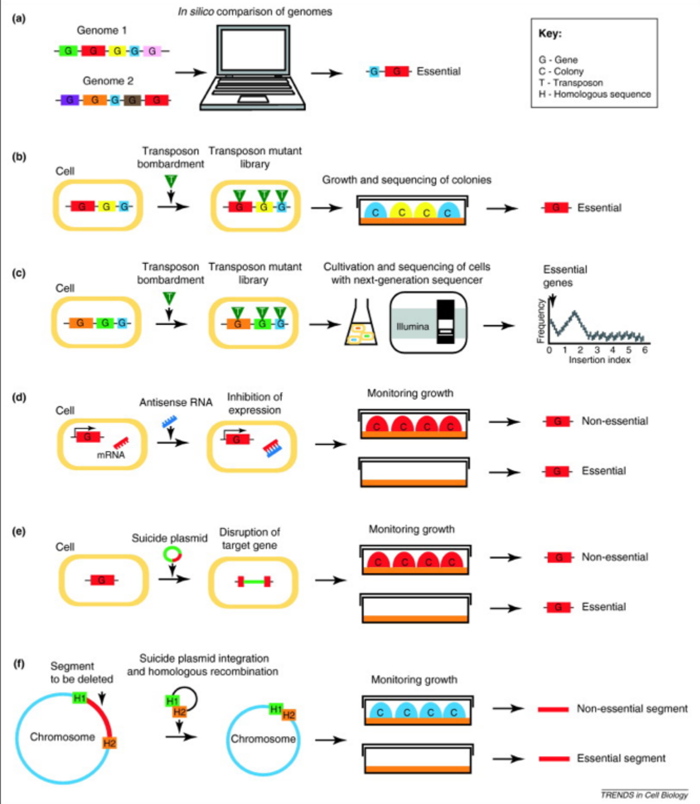Using global transposon mutagenesis, Prof. John Glass and his group isolated and characterized the genes of M.genitalium into three categories: essential, growth-impeding and non-essential. Toward achieving rapid and large scale genome modification directly in a target organism, they have also developed a new genome engineering strategy that uses a combination of bioinformatics aided design, large synthetic DNA and site-specific recombinases.

Define rules for designing an algorithm with transposon bombardment data to create a minimized cell capable of rapid growth
Genome Design. Challenges of making multiple changes at once. Safety and containment considerations.Assignment: Make a set of rules for redesigning a bacterial genome based on biological knowledge and transposon bombardment data. I have provided an Excel file that lists all the genes in Mycoplasma mycoides JCVI syn1.0, and tells you what transposon bombardment revealed about each gene. Is it essential (e), not-essential (n), or whether a disruption of that gene causes impaired growth (i)? If one were to design an algorithm capable of designing a minimized cell capable of rapid growth, what are the rules one would use to program the algorithm?
Our "living" minimal cell algorithm:
Two sets of genes important for a minimal living cell:
As an extra step we proposed to compare the identified essential genes with synthetic minimal cell (SML) genes and find the differences. We believe that there are two sets of genes essential for life: The ones common to the minimal genome and a SMC, encoding the Tx-Tl machinery and the ones that are not found in SMCs, i.e. DNA replication and energy production genes.
Compare essential genes with synthetic minimal cell genes & find what is extra
Searching later on the related literature, we found a paper titled Essence of life: essential genes of minimal genomes by John Glass's group, where they describe in depth several answers to the question of the homework. Our answer matches their first proposed method (a):
![How to grow [almost] anything class Viirj Kan](img/logo.png)